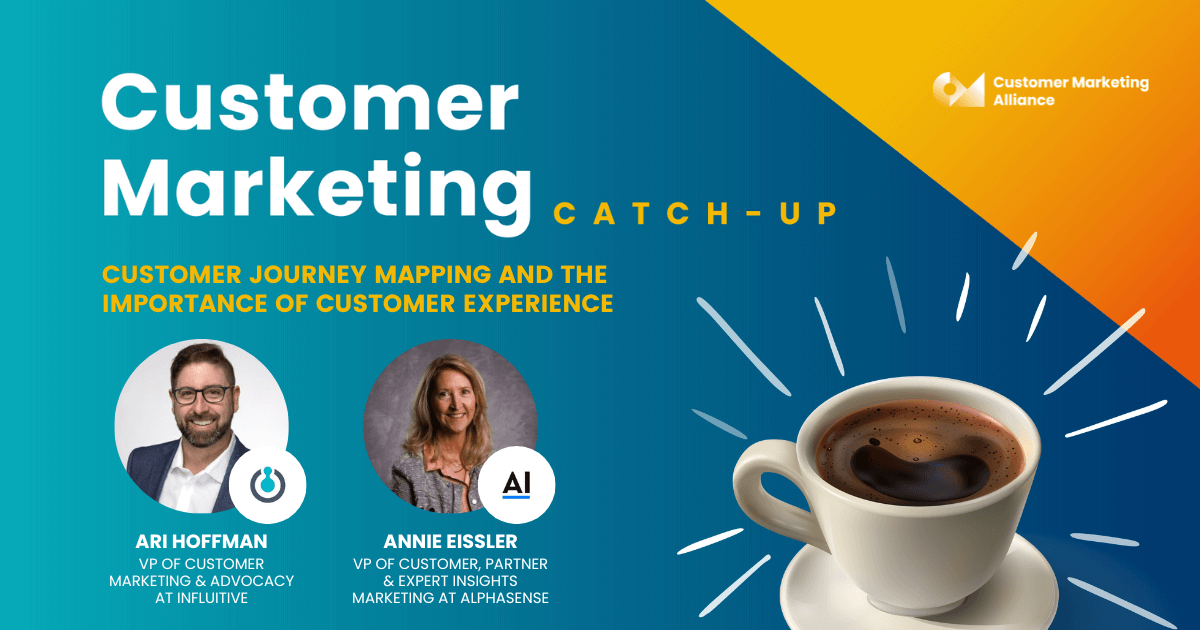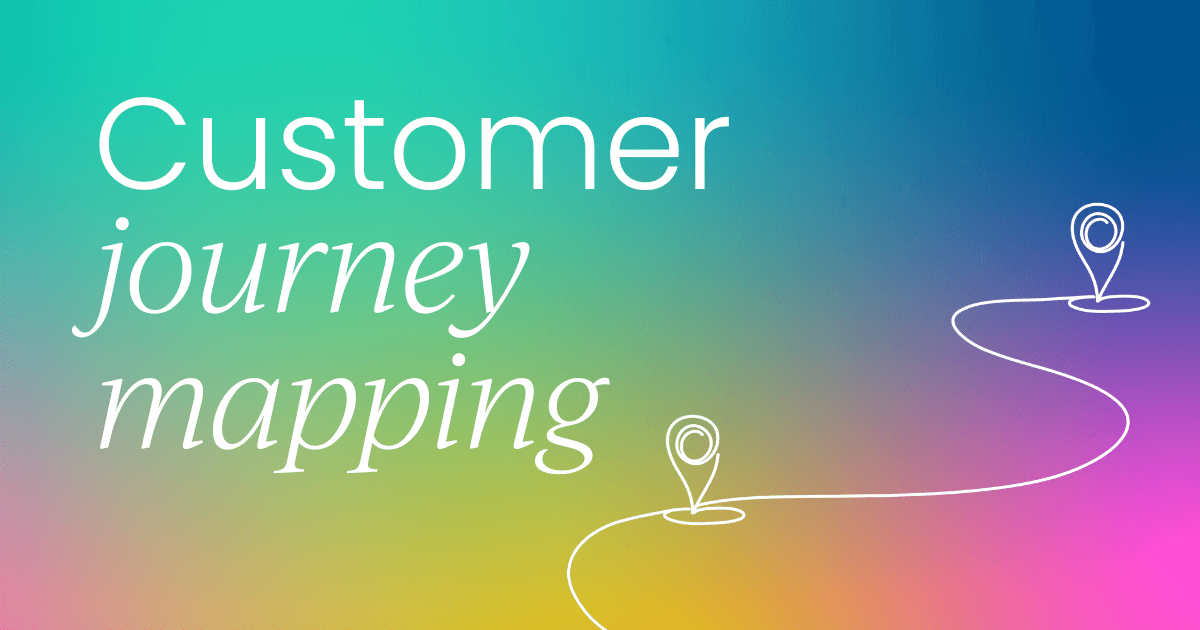As customer experience cements its place as a competitive differentiator in B2B, journey mapping and lifecycle marketing have become essential tools for driving retention, adoption, and long-term growth.
At AlphaSense, we’ve learned that building a consistent, scalable customer experience requires more than just good intentions, it takes executive alignment, cross-functional collaboration, and a dedicated team focused on every stage of the customer journey.
When you combine that focus with strategic lifecycle programs and strong stakeholder relationships, you can turn customer marketing into a core growth engine that supports the business from onboarding to advocacy.

Why customer journey mapping matters
Journey mapping is not easy. Most companies weren’t built from the ground up with customer experience in mind. Functions and departments were set up independently, each with their own processes. That creates a fragmented experience for customers.
The reality is, we don’t have one customer experience – we have many. They’re inconsistent, not easily replicable, and that creates real challenges when you're trying to improve adoption, scale engagement, or create repeatable upsell motions.
Without a consistent journey, we can’t automate or optimize any of that.
Mapping the chaos
That’s why customer journey mapping is so critical, and also so difficult. We’re trying to align the internal functions and uncover every touchpoint and milestone in a customer’s journey.
But often when we talk to stakeholders, the answer to “what happens here?” is, “Well, it depends.”
It might happen, it might not. It depends on which team is involved or what kind of customer it is. There’s a lot of ambiguity, and it takes time and collaboration to work through it.
Trying to take all those variables and boil them down into a simple, clear visual representation is incredibly challenging. We’re talking about enough sticky notes to fill the room we’re sitting in right now.
Meeting the expectations of the modern buyer
I’ll be honest, brands like Apple that offer seamless user experiences have wholly changed the B2B game. Today’s B2B buyers expect the same kind of frictionless, user-friendly experiences they get from B2C tech, but with their business software. Those expectations have carried over into their professional world, and it’s on us in B2B tech to meet them.
Even though many companies wax lyrical about customer experience being their number one priority, very few are actually putting dedicated teams or working groups in place to focus on it. It’s a hard thing to operationalize.
But if we want to drive adoption, grow engagement, and scale upsell in a meaningful way, we have to put in the work to understand and design that experience.
Starting small with journey mapping
We knew journey mapping would be a big, complex effort, so we started small. We picked one customer segment to focus on first.
No one else at the company was stepping up to look at the customer journey holistically. Different functions like customer success or customer education had their own siloed views of the journey, but no one was connecting the dots end-to-end.
When I proposed we take this on, no one pushed back. In fact, we got our CRO to sponsor the initiative. He felt it was so important to the business that he shared it with the board, which definitely raised the stakes for us. But it also validated just how critical this work is.
Our SVP of Customer Success is equally invested. For him, having a well-defined, predictable, and scalable journey is key to growing and optimizing his team to meet future goals. That kind of executive alignment makes a huge difference.
Customer experience is the new standard
Customer experience used to be seen as a “nice to have” in B2B, but that’s no longer the case. Think about how expectations have shifted – once one phone had a camera, every phone had to have one.
Now, when you get a Netflix-like experience in one app, you expect that level of ease and personalization everywhere. The bar keeps getting raised.
That’s why our work on customer experience is so important. It’s not just about making things nicer; it’s about staying competitive. And for us internally, it plays directly into how we scale.
When we know what the journey looks like, we can design teams and processes to support it effectively.
How I scaled my customer marketing team
When AlphaSense acquired my previous company and I joined the team, customer marketing was pretty thin on the ground. There was only one person writing customer stories. That was it. Maybe there had been more support in earlier years, but at the time I joined, our function was very limited.
When I reviewed our integrated marketing plan and saw that customer marketing was one of our five key pillars (with a mission to create customers for life), it was clear we needed to do more. One person writing stories wasn’t going to deliver on that.
So I made the case to build out a full lifecycle customer marketing team. I was approved to hire a director and additional roles. Now, we have:
- One person focused on lifecycle, working closely with customer success on adoption and engagement (and leading our journey mapping effort)
- One person dedicated to upselling and growth
- One person focused entirely on advocacy
- A new hire dedicated to executive programs, like our customer advisory board, which spans multiple functions
It’s been a big shift, and I’m proud of how far we’ve come. I’m hoping to expand further – ideally, I’d love to add a second person focused on growth and another on lifecycle. We're still building, but the foundation is there.
What lifecycle marketing really looks like
Our lifecycle marketer owns the customer newsletter, but that’s just a small part of what they do. The real impact comes from how closely they partner with our customer success team on onboarding, adoption, and engagement programs.
Let me give you an example. We recently launched a new product for one of our consulting customer segments. To roll it out successfully, we had to build an ongoing, coordinated outreach campaign, tag-teaming between Customer Success and Marketing. That included a cadence of emails, curated assets, in-app messages via Pendo, and ongoing education.
It wasn’t just about creating assets, it was about building a full, strategic flow of communication that supported users over time and kept the product top of mind. That kind of program is a core part of what lifecycle marketing does.
Supporting customers after the sale
In traditional marketing, the pre-sale journey is beautifully orchestrated – rich content, alignment with sales, seamless handoffs. But once the customer signs, that experience often falls apart. Suddenly, CSMs are left piecing together decks on their own. Marketing disappears. There’s little support or infrastructure for post-sale engagement.
That’s why lifecycle marketing is so crucial. We treat our customers like ongoing stakeholders in our brand experience, not just recipients of support. And we make sure our CSMs have the tools and content they need to succeed.
Advice for scaling your team
First and foremost: stay focused. Especially in areas like advocacy, it’s easy to get pulled in a million directions. We’ve gotten very strategic about where to place our resources.
For example, when it comes to case studies, we align closely with sales and product marketing to identify where we have gaps and what stories we need to support key business priorities.
We’re not just creating in a vacuum, we’re targeting what matters.
Just as important: invest in your stakeholder relationships. Cross-functional alignment is everything. Spend time with your peers, their peers, and their leadership. Build those relationships and keep them strong.
You want to be able to call on them when you need support, and that only happens if you’re nurturing those connections regularly.
Teach your team to communicate upward
I spend a lot of time training my team to think and communicate like leaders. Every week, our entire marketing org contributes to a slide deck that summarizes key updates. On Monday, our CMO packages that up and sends it to our executive leadership team.
I make sure my team owns those weekly updates, but I also coach them to frame their work with the right lens. What will leadership care about? Not the technical details of an email sequence, but the outcome or business impact it drives. It’s a skill I want them to build, because I can’t be everywhere.
They need to be seen as trusted voices across the organization.
What I’ve learned the hard way
One of the biggest mistakes I’ve made is forgetting to loop in a key stakeholder. It happens – especially when you’re moving fast – but it always comes back to bite you. Even if it’s unintentional, people notice when they’re left out of the loop.
That’s why I now try to be very methodical about stakeholder management. Having a visual map of who needs to be informed at each stage of a project is something I’ve started doing, and it’s been incredibly helpful. It’s one of those small things that can prevent a lot of friction later on.


 6 min read
6 min read
 Follow us on LinkedIn
Follow us on LinkedIn




